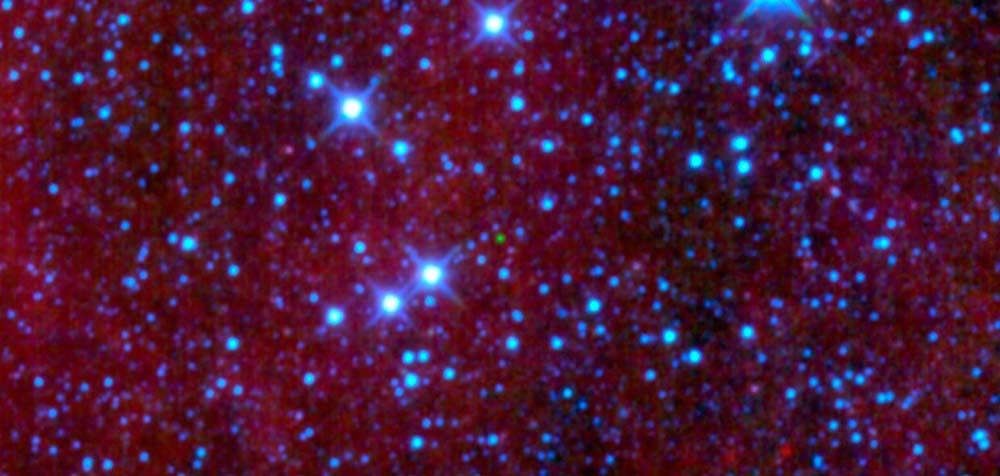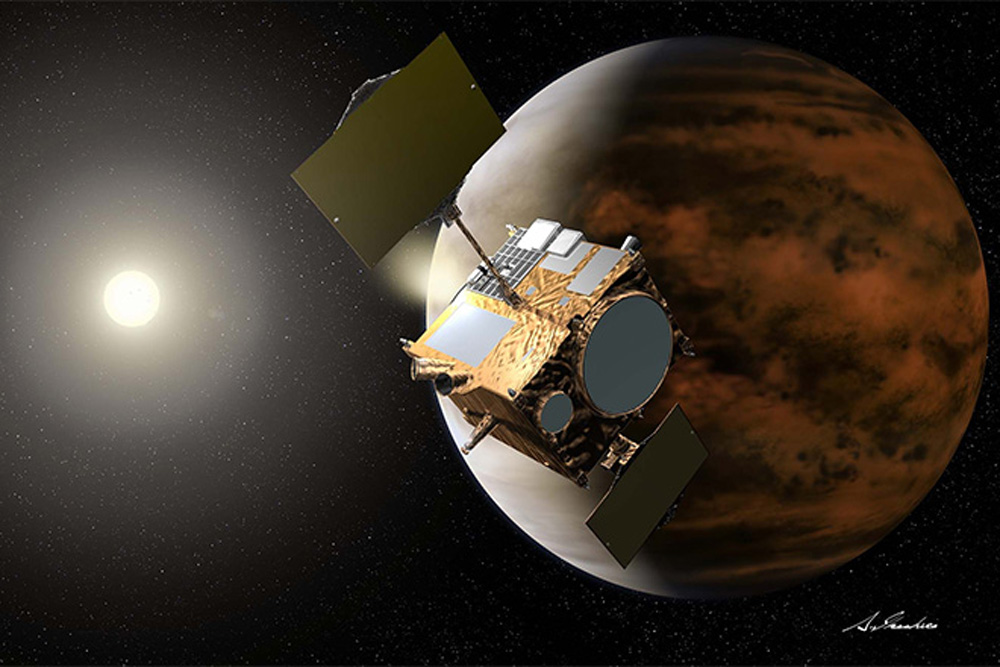Misfit Failed Star Is Stinky, Cold and Glowing Green

A NASA spacecraft scanning the skyhas discovered a coldfailed star that glows green in infrared light and has an atmospherefilledwith deadly gases that would make it pretty stinky, too.
The failed star is what astronomerscall a brown dwarf, acatch-all category for objects that appear to be too large to beplanets, butnever attain star-hood. It is one of the coldest brown dwarfs yetfound. [Newphoto of brown dwarf]
Scientists used NASA's Wide-fieldInfrared Survey Explorer,or WISE, observatory to spot the brown dwarf, which is dim but shines apalegreen as a result of the way astronomers process infrared images tomake themvisible to human eyes.
"The brown dwarfs jump out at youlike big, fat, greenemeralds," said Amy Mainzer, WISE deputy project scientist at NASA'sJetPropulsion Laboratory (JPL) in Pasadena, Calif.
Brown dwarfs look green in WISEimages because the methane in their atmospheres absorbs theinfrared lightthat has been coded blue, Mainzer added. Since the objects are also toofaintto give off the infrared light that is color-coded red, they show up asgreen.
Browndwarfs are made of gas, much of it in the form of methane,hydrogen sulfideand ammonia, and at concentrations that are deadly to humans, and arefoul-smelling to boot.
"If you could bottle up a gallon ofthis object'satmosphere and bring it back to Earth, smelling it wouldn't kill you,but itwould stink pretty badly ? like rotten eggs with a hint of ammonia,"Mainzer said in a statement.
Breaking space news, the latest updates on rocket launches, skywatching events and more!
The new brown dwarf
Brown dwarfs are cosmic misfits thatstart out as collapsingballs of gas, like stars, but they lack the mass to fuse atoms togetherat theircore and shine with starlight.
Over time, brown dwarfs cool offuntil they can be seen onlyin infrared light. There may be many such objects lurking in our cosmicneighborhood, but astronomers know of only a handful so far,researchers said.
WISE's new brown dwarf, called WISEPCJ045853.90+643451.9,is estimated to be 18- to- 30 light-years away. It has a temperature ofabout620 degrees Fahrenheit (327 degrees Celsius), making it one of the coldestbrown dwarfs known, researchers said.
The discovery was confirmed byfollow-up observations at theUniversity of Virginia's Fan Mountain telescope, the Large BinocularTelescopein southeastern Arizona, and NASA's Infrared Telescope Facility onMauna Kea,Hawaii.
The research has been detailed anissue of the AstrophysicalJournal.
NASA launched the WISE observatory inDecember 2009 and thebrown dwarf was spotted about 57 days into the survey mission.Researchers hopethat the swift discovery is a sign that WISE will deliver more.
Ultimately, the WISE observatory mayidentify hundreds ofbrown dwarfs and the mission's science team has already racked up ahost ofcandidates that appear similar to the newly discovered one, researcherssaid.
Cosmic laboratories
To scientists, brown dwarfs providelaboratories for studyingplanet-like atmospheres.
"They're a great test of ourunderstanding ofatmospheric physics of planets, since they don't have solid surfaces,andthere's no big, bright sun to get in the way," said study co-authorMichael Cushing, a postdoctoral fellow at JPL.
WISE is scanning the whole sky ininfrared light, picking upthe glow of not just brown dwarfs but also asteroids, stars andgalaxies. It hasdiscovered 19 comets and more than 33,500 asteroids so far, sendingmillions ofimages down to Earth in the process.
NASA launched the WISE telescope inDecember 2009 on a10-month mission to map the entire sky.
The telescope has runout of coolant needed to keep its four infrared detectorsfrom warming up,researchers said. But two of the detectors work well even at warmertemperatures, mission scientists have said.
- Gallery:WISE Up: Space Telescope's Stunning First Photos
- Video:Getting WISE to Brown Dwarfs
- NASASky-mapping Telescope Starts New Mission...Without Coolant
Join our Space Forums to keep talking space on the latest missions, night sky and more! And if you have a news tip, correction or comment, let us know at: community@space.com.

Space.com is the premier source of space exploration, innovation and astronomy news, chronicling (and celebrating) humanity's ongoing expansion across the final frontier. Originally founded in 1999, Space.com is, and always has been, the passion of writers and editors who are space fans and also trained journalists. Our current news team consists of Editor-in-Chief Tariq Malik; Editor Hanneke Weitering, Senior Space Writer Mike Wall; Senior Writer Meghan Bartels; Senior Writer Chelsea Gohd, Senior Writer Tereza Pultarova and Staff Writer Alexander Cox, focusing on e-commerce. Senior Producer Steve Spaleta oversees our space videos, with Diana Whitcroft as our Social Media Editor.
